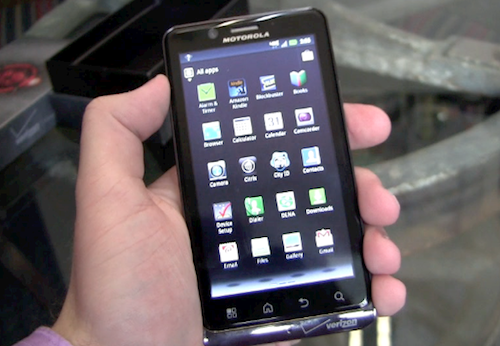
Until now, Verizon had a bit of a disconnect in their Android lineup of smartphones. If you wanted a 4G LTE phone with Verizon, you were making a bit of a compromise in the performance department. While the HTC ThunderBolt, LG Revolution, and Samsung DROID Charge are impressive, they lack the dual-core processors that are becoming synonymous with high-end Android devices.
Three quarters of a year after its initial announcement at CES, the Motorola DROID Bionic has been redesigned, reworked, canceled, and reanounced (not particularly in that order), and is finally available at Verizon for a pricey $299.99 with a two-year contract. It brings together the dual-core hardware buffs with those that prefer the super fast performance that only 4G LTE can provide, and packs a bunch of other high-end features like 1080p HD video recording, a 4.3-inch qHD display, and Android 2.3.4.
The DROID Bionic was a showstopper at CES earlier in the year, but in the wireless world, January was an eternity ago. Nine months and countless other dual-core devices later, can the DROID Bionic and its 4G LTE goodness make waves in an Android market that's moving at the speed of light? I've had my hands on one for about 24 hours, and I think it can.
- It's definitely a "DROID" device. It's as robot-y as ever, with brash curves and an industrial design that looks like the offspring of the Motorola DROID X2 and DROID 3. It feels a lot like the DROID X2, though it's a bit thicker and the camera hump isn't as pronounced. Design preferences are always subjective, but I'll take the new design any day over the rounded smartphone we saw at CES. The new look closely matches Motorola's latest design scheme, and gives the phone a powerhouse look and feel.

- Much to my surprise (especially after seeing the leaked pictures), it's not as thick as I expected it to be. You'll feel it in the pocket, but something about the angled design and tapered battery door makes it feel slimmer. That and it actually is slimmer. Coming in at 11mm (at the bottom), the DROID Bionic is the thinnest of the 4G devices.
- Finally, an LTE phone that sports a dual-core CPU. It's a familiar feeling, though; take the performance of the DROID X2 and DROID 3, add in a 4G radio, and you have the Bionic. The 1 GHz dual-core processor performs well, and I haven't encountered any major lag yet. The phone is snappy all around.

- Packing Android 2.3 with Motorola's custom UI, the software look and feel is very similar to the other Motorola devices in Verizon's lineup. You get the typical blue color scheme, along with some nifty Motorola apps like the Webtop Connector (more on that later) and MOTOPRINT. MOTOPRINT is an app that allows you to print wirelessly to networked printers, or to a standalone machine using custom software. I haven't tried it out just yet.
- Bionic has an 8-megapixel camera with 1080p HD video recording capabilities. There's no significant improvement in the camera performance - still pictures still look grainy in comparison to the competition - though the video quality is impressive.

- In the past, LTE has been synonymous with battery drain, but in initial tests, the Bionic's 1,735 mAh battery has performed surprisingly well. When I turned it on at 3:00 PM yesterday, I was sitting at around 70 percent. I used it heavily throughout the day, sending text messages, tweets, emails, and making a few phone calls around 20 minutes each. The phone made it into the evening and finally powered down around 12:35 AM. Check back for more in the coming days, as I'll be running additional tests leading up to the review and various dogfight videos.
- Like the Atrix 4G and PHOTON 4G, the DROID Bionic launches with a great accessory ecosystem. If you have spare cash left over after plunking down three Benjamins (or perhaps 15 Jacksons or 30 Hamiltons - who am I to discriminate?) for the phone, you can pick up a laptop dock for $300, an HD dock for $100, or a charging dock for $40.
It's still to early to issue a final say on this device, but the DROID Bionic is a great addition to Verizon's 4G lineup of phones. Those that crave power and LTE connectivity will no longer be torn between the high-end 3G handsets and the 4G crop. Outside of that, it has some potential in the battery department, and it sports a svelte design that should appeal to many.
Have you seen the unboxing? If not, what are you waiting for? Jump on it below, and hit the comments section with your thoughts!



